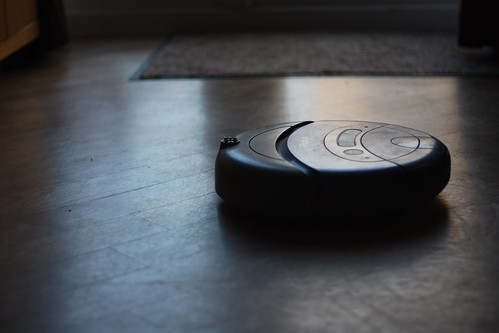Disruptive consumer products are naturally geared towards early adopters and spread because this small cohort of early adopting customers allow the products to get a toe-hold in the market.
iPods, snowboards and microplane graters all benefitted from the fact that only a small fraction of the population needed to initially purchase them in order for an overwhelming chain-reaction to begin:
One person rides a subway with white iPod headphones, suddenly everyone’s got white iPod headphones.
One kid takes to the slopes with a snowboard instead of skis, suddenly everyone’s taking to the slopes with a snowboard instead of skis.
One celebrity chef employs a microplane grater to crush some garlic during a television broadcast, suddenly every home gourmand is employing a microplane to crush some garlic.
That the products are highly visible to the appropriate market is only one half of the equation. The other half of the equation is that the choice to purchase a consumer product typically involves only one – possibly two – decision-makers. It’s an easy decision to make with little real risk involved.
No one ever wrote a feasibility report to decide whether or not to buy a Roomba – which is a good thing for Roomba’s manufacturer. As more people become involved in a decision to purchase a given product, the chance of said product ever being purchased approaches zero.
Want proof? Get eight of your friends together with the intention of going out for dinner, then try to collectively decide on a restaurant. You’ll starve before a decision’s ever made.
Maybe we should be working on ways to make investments in transit less like dinner and more like a Roomba.
That’s not to suggest we should be limiting public involvement in the decision-making process. It is, however, to suggest that we should be doing everything in our power to facilitate and ease the public’s ability to actually make a decision.


4 Comments
Maybe. The problem is that for every Roomba, there are ten other products that fail. At the investing stage that doesn’t really matter, because the Roomba makes back more than ten times it’s initial investment, so after investing into many products the investors make money.
Now take 10 creative transit projects, each costing 1 billion$. Nine fail, one is successful – but it still doesn’t make a profit. … :-/
That’s precisely right. The question is how to minimize that risk to make the act of making decisions easier?
I think the best way is to involve a large number of people very early on, but very few in the final stages. To take the dinner example, send an e-mail to your 24 friends asking where they want to eat. Put these suggestions into a spreadsheet, and have one or two people pick from the top few on the list. This taps into the knowlege base of the crowd to do what they do best – bring in a breadth of information. Person #15 might know of a great sushi place, and you find out most everyone votes that they like sushi. Having only a few people make the final decision brings in a human aspect to the process, so you don’t go out to pizza every single time.
Of course, in Seattle (and most cities) we do the opposite. We have a few designers create beautiful renderings of a project after thinking out most of the details, then throw it at a review committee of a large number of people (or worse, it goes out for a vote to the general population) that second-gueses every decision then throws out the project because there isn’t enough parking.
I’m planning on asking the Seattle transit-loving Internet community for suggestions of what gondola routes would be appropriate. I’ll provide all kinds of information to get them started, and let them use their knowledge of the city to plan routes that make sense to them. Then, assuming I can move the project forward, at some point transit and planning experts can widdle down the list to those that make the most sense to the city.
whittle